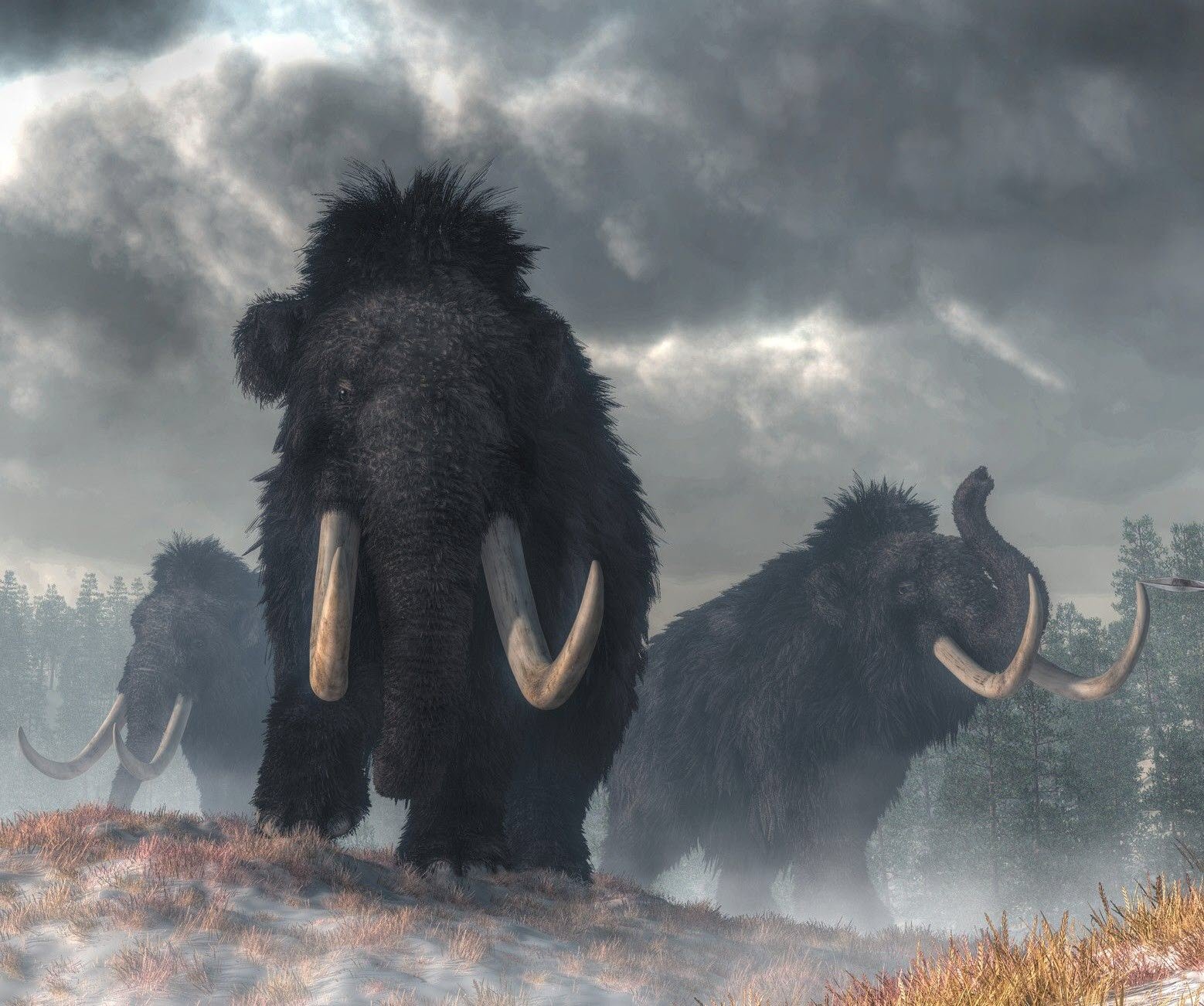"Mammoths can't go extinct. They're the biggest things on Earth," said Manny, the woolly mammoth character in the movie Ice Age. But the hairy cousins of Asian and African elephants were wiped off of this planet around 4,000 years ago. Why mammoths and other Arctic mammals became extinct at the end of the last ice age is a hotly debated question. One widely accepted theory is that fire and the development of tools, such as spears, hooks, and nets, helped humans become ace hunters, driving woolly mammoths, ground sloths, rhinoceros, and other mammals into extinction.1 However, researchers also consider climate change, habitat loss, and disease outbreaks as probable causes.2

In recent years, scientists turned to environmental DNA (eDNA) in permafrost and lake sediments across the Arctic to dig deeper into the reasons behind mass species extinction. In a recent study published in Nature, led by Eske Willeslev from the University of Cambridge and the Lundbeck Foundation GeoGenetics Centre, proposed climate change as the main culprit, not humans.3 By analyzing eDNA sequences collected from multiple sites, the scientists reconstructed the ecological history of the Arctic over the last 50,000 years. “[eDNA] are in different layers of the sedimentary profile, and we retrieve the DNA from the different layers, which represent different age frames,” said lead author Yucheng Wang, a research associate in the Department of Zoology at the University of Cambridge and a visiting postdoctoral researcher at the University of Copenhagen.
Based on ancient DNA preserved in mammoth fossils, Wang and others previously believed that woolly mammoths became extinct around 10,000 years ago, possibly because of their interactions with humans. When Wang analyzed the mammoth eDNA from the sediment, he made a surprising discovery. It turns out that mammoths survived until 3,900 years ago, overlapping with humans for 20,000 years. “I have to clarify that this is the prehistory human in a very small population, and they don't have guns... so their ability to kill animals is very limited,” he said.
Sedimentary eDNA samples are inherently difficult to examine because the DNA fragments come from numerous plants, animals, and microbial species. To establish the relationship between mammoths and their environment, Wang focused on plant sedimentary eDNA in over 500 samples collected from across North America, Asia, and Europe. Wang and his colleagues generated a reference genome database covering approximately 1,500 contemporary plant species to recognize which species’ DNA is present in the frozen mud samples. “They developed a database specifically for Arctic plants, and that allowed them to identify far more than had really been done before,” said Peter Heintzman, an associate professor in the Centre for Paleogenetics at the University of Norway, who was not part of the study.
Additionally, Wang and his colleagues used paleoclimate modeling to predict past climates and their effect on plant species in the Arctic. They reconstructed climate conditions over the last 200,000 years in the Arctic and combined that with human occupation and animal and plant eDNA coverage. “We found mainly the climate change, the warming trends of the climate change, that caused the vegetation change. [Climate change] is the main factor driving the extinction,” Wang said. Therefore, when the last patches of vegetation in the Arctic tundra disappeared because of warmer climates, the mammoths that relied on it for food also vanished.
The eDNA database used in Wang’s model spans 50,000 years with samples coming from many intercontinental sites, and the climate change timeline and effects varied between continents. “This is a real problem with combining these kinds of massive, spatial-temporal data sets. We know that what is happening is very complex,” said Heintzman.
Looking ahead, Wang and his colleagues have a number of other species to identify in their eDNA samples, including genomes from animals, microbes, and insects. Getting a complete picture of the species present throughout time will help them understand the effects of climate change on the entire ecosystem.
References
- L. Boissoneault, “Are humans to blame for the disappearance of earth’s fantastic beasts?,” https://www.smithsonianmag.com/science-nature/what-happened-worlds-most-enormous-animals-180964255/, accessed on March 25, 2022.
- D.H. Mann et al., “Life and extinction of megafauna in the ice-age Arctic,” PNAS, 17-112(46):14301-6, 2015.
- Y. Wang et al., “Late Quaternary dynamics of Arctic biota from ancient environmental genomics,” Nature, 600:86-92, 2021.





